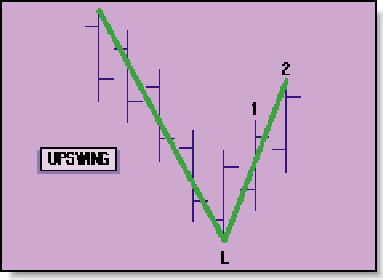Theory
by Robert Krausz
To many market participants, technical analysis is the foundation of any technical trading plan, when in fact, market analysis and trading are two different modalities. Market analysis can determine whether important information such as the trend has changed direction or the market has reached support. The trading plan, however, will have specific rules for you to take action, and therein lies the difference. The market analysis can tell you when and why to take action; the trading plan tells you what action to take. It is the blending of these two modalities that is a key step toward becoming a successful trader. Every aspect of the two modalities ? the market analysis and the trading plan; the entry and exit rules; money management and other details ? must be in concert. Analysis is the handmaiden for trading, and not the other way around. If your technical work signals that the trend has changed direction, then that signal should be the same reason for you to take action in the market.
In this article, I present a unique technical analysis method as well as a trading plan called the Basic trading plan. I will explain the technical method, called Gann swing trading, providing both definitions of the trend direction as well as when the trend direction has changed. The Basic will have rules covering important details such as entering and exiting the market, techniques for managing your position, stopping your loss and more.
But before I begin, let me tell you how I came into possession of this technical concept.
THE GREATEST MARKET RESEARCHER
Who is the greatest market researcher of all time? Before you answer, consider this: Do you know of anyone who has researched in depth price bar patterns, astronomy, multiple time frame relationships, swing chart trend definitions and support and resistance zones based on angles? Have you met any traders who have investigated numerology, ancient and modern geometry, mathematical relationships of numbers and squaring time and price? What about Western and Hindu astrology and pyramid technology, and their possible ties to the markets? Do you know of anyone doing this degree of research, and without a computer?
W.D. Gann was such a trader.
To this day, William D. Gann is an enigma. Much has been written about his success, or the lack of it. Questions remain about how great his techniques were, or how poor. Did he make fortunes or lose them? Most important, can any of his concepts stand up in today's fast-moving computer-driven markets?
Back in the 1950s, W.D. Gann charged $5,000 for his courses. At that time, please recall, that was the price of an average three-bedroom house in the US. Today, the equivalent cost would be more than $50,000. So back then, you had to be pretty serious about trading to pay that much. And yet, would that price be worth it, then as now, if the techniques were genuine?
All of Gann's swing concepts had to be pulled together and integrated to formulate a mechanical trading plan that was tradable and profitable. Those of you who have tried to do this will know what I am talking about. Three points must be mentioned:
1 Any valid plan of this mechanical nature must have a simple philosophical basis. It can be geometric, mathematical or time-oriented, or any combination thereof.
2 Curve-fitting or overoptimizing is the kiss of death to any mechanical trading plan. Unfortunately, there are programs out there that encourage system designers to do just that. Robustness is the key.
3 The plan must be dynamic enough to change with the market.
The concepts and techniques embodied in the trading plan presented here are based on these points and are similar to those I use in my own personal trading, which includes incorporating multiple time frames and Fibonacci concepts.
THE BASIC PLAN
Before we can discuss the rules, we must have a clear understanding of the definitions. An example is presented accompanying each definition:
¥ Upswing: From Down to Up. The swing direction can change to up only if the market makes two consecutive higher highs (Figure 1). Gann also needed higher lows for his swings to change direction. But in today's fast computerized markets, I do not use that qualifier.

FIGURE 1: UPSWING: FROM DOWN TO UP. The swing direction can change to up only if the market makes two consecutive higher highs.
Market analysis can tell you when and why to take action; the trading plan tells you what action to take. It is the blending of these two modalities that is a key step toward becoming a successful trader.
Robert Krausz is private trader and president of Fibonacci Trader Corp. He was featured in Jack SchwagerÕs New Market Wizards. This article was adapted from KrauszÕs book A W.D. Gann Treasure Discovered. The Basic swing plan shown here is one of four plans: Two end-of-day and two real-time plans for professional traders. For more information, visit https://www.fibonaccitrader.com or inquire by fax, 512 443-5751.